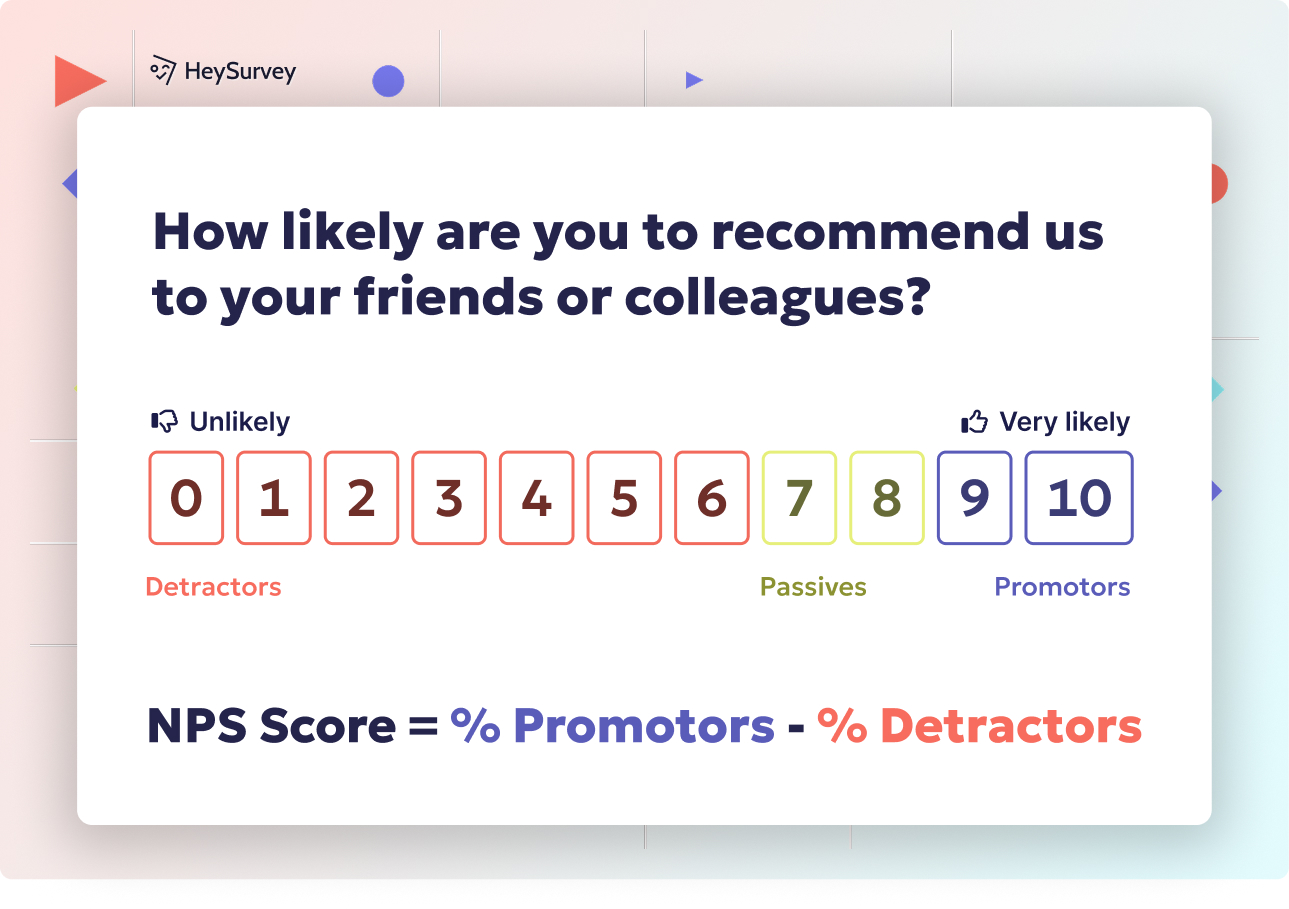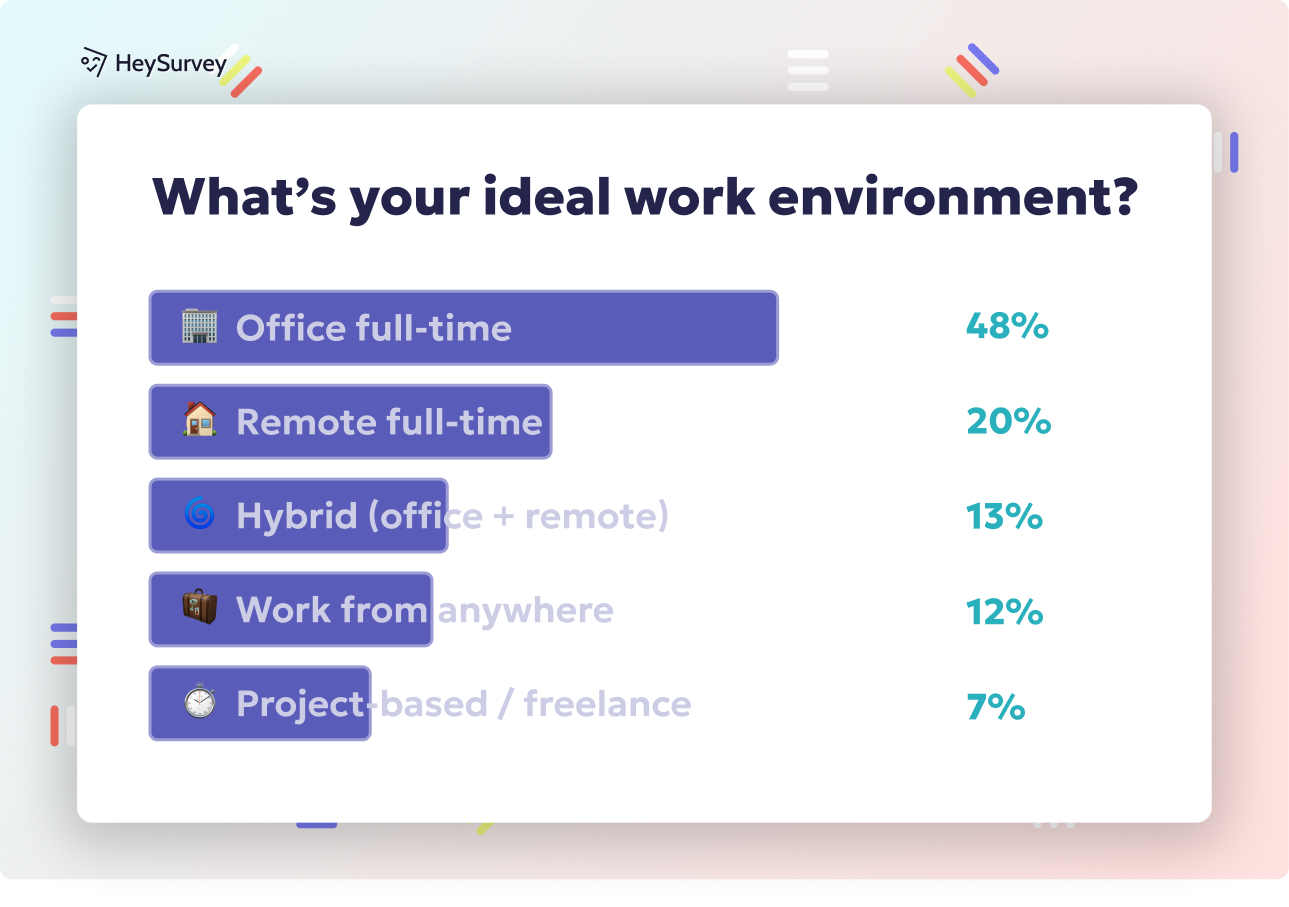28 Survey Questions on Training to Boost Employee Engagement
Discover 25 sample survey questions on training effectiveness to boost your staff development. Find expert tips for impactful feedback.
Introduction: Why & When Training Surveys Are Critical
Every learning journey needs a reality check, and that’s exactly what training surveys deliver. You use them before, during, and after your sessions to shape courses, boost engagement, and persuade executives that your programs matter. When you pick the right training survey questions, you're not just playing detective—you’re turning feedback into action for real results.
Pre-Training Needs Assessment Surveys
Why & When to Use
Imagine planning a road trip—wouldn’t you check your fuel, route, and snacks before you leave? Pre-training needs assessment surveys are your travel checklist for learning. By sending these out 2 to 4 weeks before your training launches, you're zeroing in on skill gaps and mapping the learning agenda to genuine business goals.
A big plus? These surveys let you categorize learners by their unique needs, turning every session into a personalized adventure, not a generic detour. When you analyze these responses, you spot trends in where learners are struggling, discover preferred formats, and identify where that true sense of urgency kicks in.
The all-star move here is data-driven design. Survey insights shape your course content, order, and delivery. You’re not guessing what people need; you’re working with the facts. When folks see their issues reflected in the agenda, there's instant buy-in from day one.
Let’s face it: Learners want you to speak their language. At HeySurvey, we give you everything you need to listen—no compromises, all features free.
5 Sample Questions
Which of the following tasks do you find most challenging in your current role?
Rate your confidence in performing [critical skill] on a 1-5 scale.
What learning format (in-person, virtual, micro-learning) best suits your schedule?
List two on-the-job obstacles you’d like this training to address.
How urgently do you need to apply this skill? (Immediately, 1–3 months, 3–6 months)
Pre-training needs assessment surveys increase training effectiveness by aligning learning content with participants’ actual skill gaps and priorities, improving relevance and buy-in—source

Certainly! Here are simple, step-by-step instructions for creating your survey with HeySurvey, perfect for beginners:
Create Your Survey in 3 Easy Steps
Step 1: Create a New Survey
Click the “Use Template” button below these instructions to start with a pre-built survey template. - Alternatively, on the HeySurvey homepage, choose “New Survey” and select a template or start from scratch.
Step 2: Add Your Questions
- In the Survey Editor, click Add Question where you want to insert a new question.
- Choose from a variety of question types like Multiple Choice, Text, Scale, and more.
- For each question, enter your text, set requirements, and adjust options as needed.
Step 3: Publish Your Survey
- When you’re finished editing, click Publish in the top menu.
- You will be prompted to create or log in to your HeySurvey account if you haven’t already.
- Once published, copy the survey link or embed it in your website.
Bonus Steps: Personalize and Power-Up Your Survey
Apply Your Branding:
Go to the Designer Sidebar to upload your logo, select your brand colors, and adjust fonts/backgrounds for a personalized look.Adjust Survey Settings:
In the Settings Panel, set start/end dates, respondent limits, or define respondent redirect behavior at survey completion.Add Branches or Custom Logic:
For advanced surveys, add branching (conditional paths) so that respondents see different questions based on their answers.
Ready to get started? Click the button below to open your survey template!
For more details, check the general HeySurvey guide below or explore the in-app tooltips for each feature. Happy surveying!
In-Session Pulse Surveys
Why & When to Use
Forget waiting until the end—sometimes you need feedback in the moment. In-session pulse surveys swoop in mid-course, letting trainers adapt based on real-time engagement. Delivery tweaks can happen overnight, keeping energy levels up and confusion down.
So, how do these surveys work? You use them about halfway or after a big module to catch misconceptions early and make course corrections before anyone tunes out. Asking students what they need more help with shows you care, and that’s a magic ingredient for trust.
Pulse checks aren’t just for the instructor’s ego. With fresh feedback, you can: - Revisit sticky concepts - Change pacing - Add activities - Calm nerves
Here’s the thing—your sessions become more like guided tours than wild goose chases. Plus, those learners that tend to drift start raising their hands. It’s a win-win, and with HeySurvey, your in-session feedback forms never run out of steam—or cost.
5 Sample Questions
On a scale of 1-5, how clear was today’s module on [topic]?
What concept would you like the trainer to revisit?
How engaging did you find the interactive activities?
Do you feel comfortable asking questions in this session? (Yes/No + comment)
What single improvement would most enhance tomorrow’s class?
Empirical research finds that introducing live interactions and feedback during training significantly enhances learner engagement, performance, and course persistence. [Qualtrics 2025 – real‑time pulse survey benefits]
https://www.qualtrics.com/people/engage/pulse-surveys/
Post-Training Reaction Surveys (Kirkpatrick Level 1)
Why & When to Use
If you want to know how your show went, you ask your audience on opening night—post-training reaction surveys work the same way. Send these immediately after your session so you can capture honest reactions while they’re crystal clear.
When those responses come rolling in, you spot the quick wins for next time or what might need a rewrite. These instant insights boost employee training feedback—fuel for better design and sweet proof for your stakeholders.
Here’s what’s cool: Everyone likes being heard, and you get to tweak things fast. It’s feedback for you, and instant buy-in for the people upstairs who wrote the checks. Win.
Learners can even flag what made a difference and what needs to go, making every program better than the last.
5 Sample Questions
Overall, how satisfied are you with the training program?
Rate the relevance of the material to your job responsibilities.
How effective was the trainer in facilitating learning?
What part of the training should be expanded or removed?
Would you recommend this course to a colleague? (Yes/No + why)
Knowledge & Skill Gain Surveys (Kirkpatrick Level 2)
Why & When to Use
Not all learning sticks, and the knowledge & skill gain survey checks what made it past the short-term memory. You roll these out right after the learning ends, or as bookends with a pre-test and post-test. If leadership or certifying bodies come knocking, you hand them solid proof of what was learned.
These surveys get right to the heart of your “Did they get it?” questions. They not only benchmark skills—they help show training ROI to anyone watching the budget.
Smart choices here include mixing multiple-choice, self-ratings, and real-world examples. You discover what knowledge actually landed and who might need a bit more polish.
And here’s the twist—when learners see their gains, confidence goes up. There’s nothing like showing someone they’ve leveled up for instant motivation.
5 Sample Questions
Identify the correct sequence for [process step A-D].
Which statement best describes the principle of [concept]?
After this training, how confident are you in performing [task]? (1-5)
Provide a brief example of applying [skill] in a real scenario.
What new tool or framework did you learn today?
A study evaluating CPR training using pre‑ and post‑tests found statistically significant improvements in knowledge and skills at Kirkpatrick Level 2 (p < 0.05) source
On-the-Job Application Surveys (Kirkpatrick Level 3)
Why & When to Use
Learning that stays in the classroom is like a souvenir fridge magnet—fun, but not useful. That’s why on-the-job application surveys land about 1 to 3 months post-training. You want to know if learners are actually using what they learned, not just humming along to the course jingle.
These surveys capture real behavior change—you’re hunting for actual action, not just good intentions. They reveal if there’s a disconnect between lessons and daily life. Plus, they’re fuel for coaching.
With responses in hand, you can: - Coach those who hit a wall - Celebrate small wins - Align with managers for extra support - Pinpoint resource gaps
Plus, when learners share a work win thanks to your program, it’s like applause in survey form. Let HeySurvey make your on-the-job training feedback game strong—no paywalls, ever.
5 Sample Questions
How frequently have you applied [new skill] since the training?
What barriers prevent you from using what you learned?
Rate the support you receive from your manager to practice these skills.
Share one success story where the training helped you solve a work problem.
Which additional resources would help you sustain this behavior?
Training ROI & Impact Surveys (Kirkpatrick Level 4)
Why & When to Use
When it’s time to count the dollars (or success stories), you pull out your training ROI survey. About 3 to 6 months post-rollout, these surveys combine learner opinions with hard business metrics. You want to turn value questions into answers with numbers.
You see, these are the questions that keep learning budgets alive—and sometimes even grow them. When you show a line from training to better productivity or customer scores, future funding suddenly isn’t a tough sell.
Plus, you can spot which modules hit or miss, helping you double down on winners. Decision-makers love seeing survey data matched with performance.
Fill out the feedback loops for learners and leaders alike, and ride the wave of proof. At HeySurvey, impact data is always at your fingertips—for zero dollars.
5 Sample Questions
Estimate the percentage improvement in your productivity attributable to this training.
Have customer satisfaction scores changed due to applying the training? (Yes/No + details)
How has the training influenced error rates or rework in your team?
What measurable business outcome best reflects the course’s success?
Based on results, should this program be expanded, modified, or retired?
Best Practices: Dos and Don’ts for Crafting Training Survey Questions
Getting actionable results starts before you hit “send.” Here are some must-do strategies for building killer learning evaluation surveys:
Dos: - Keep each question tightly focused so learners never get lost. - Always align questions with your learning objectives. - Mix it up with scales (1-5) and open-ended prompts. - Pilot test with a small group—feedback catches glitches. - Close every feedback loop by sharing how input sparked new programs.
Here’s how to keep surveys breezy and relevant:
Don’ts: - Never ask double-barreled questions (“Was the venue comfortable and well-located?”). - Ditch leading language and avoid pushing for a “right” answer. - Chop excessive length—5-10 well-chosen questions beat 30 any day. - Skip jargon so every learner, from rookie to pro, knows what you mean. - Don’t force every open field to be required, or you’ll see survey rage.
Top pro tips for more responses and cleaner data: - Give a quick time estimate (“Takes 3 minutes”) up front. - Offer anonymity for braver, truer feedback. - Format for phone screens—everyone’s thumbs will thank you. - Use analytics dashboards to spot trends without getting lost in the noise.
With HeySurvey, there’s no feature behind a paywall. Your best employee training feedback is always free—no catch. Why can’t everything be as easy as a perfect survey?
If you want training that actually works, surveys are your not-so-secret weapon. Smart, fun, and always actionable—they turn every session into a real win. Try these approaches, and you'll never have to guess what really happened again.
Related Training Survey Surveys

31 Professional Development Evaluation Survey Questions Guide
Discover 40+ professional development evaluations survey questions with 8 types of surveys to boo...

25 Knowledge Survey Questions Examples for Effective Testing
Explore 25+ knowledge survey questions examples across 7 types, with tips on crafting high-impact...

32 Coaching Survey Questions: Types, Uses & Examples
Explore 25+ coaching survey questions across key types to boost coaching impact, measure success,...
